A Labyrinth of Lies, or: Artist’s Assistant for a Day
- Christian Hain
- Jun 15, 2017
- 5 min read
Updated: Mar 24, 2020
(Berlin.) One fine day at the end of May, I happened upon a cry for help on Facebook. The team behind last year’s Dark Rooms was busy preparing a new show in that same abandoned brewery, and desperately sought a helping hand for the dirty work. The two-days-show – double The Dark Rooms’ duration! – was to open not twenty-four hours later, and there was still much left to do. Overcome by a sudden rush of altruism, I sent a text reporting for duty. That’s the upside of being unemployed lowlife: You have time for generosity.
Arriving on site, I found myself directed to a car with about two hundred cartons of catalogues in its boot (slight exaggeration possible), then carried them up an outer staircase, two or three at a time. It taught me two things: a) They were expecting a lot of visitors, and a lot of those to buy a catalogue. b) I need more workout.
Later allowed inside the exhibition space, the new recruits got armed with staplers, and rather vague instructions to transform taped-together pairs of umbrellas that still resembled miniature TIE-fighters into polyhedral wall panels. The artists, Sven Sauer and The Connor Brothers (i.e. Mike Snelle and James Golding), were really cool about it: “Just make it look good.” Had they seen any examples of my earlier attempts at DIY, they’d have been much less relaxed, I’m afraid.
Further carrying beer crates up another stairs, and losing several bottles of orange juice to a gaping hole in the ground (sorry, guys!), I made my escape in time for the Europa League Final that same night. (I had invested ten Euros in a combi-bet that would have seen me several thousand Euros richer. Would, had Ajax won; and, later, Juve, and - ah forget it. The pleasures of being unemployed.) But I guess, you’d much rather hear about the art. So be it then. Labyrinth of Lies at Wilner Brauerei opened in time with all preparations finished.
The show had several parts, two labyrinths, and many lies. A first maze of black umbrellas (those walls made in China, and installed with Berlin slave labour!), plus a second, rainbow-coloured, one. In between fake magazine covers, internet meme-like posters and postcards. And Kamis, Japanese Shinto entities that are not easily described in our words, they may include anything from personified forces of nature to household gods and spirits of the deceased. Sven Sauer painted his own versions on shower curtains, or Plexiglas plates, put in line for a three-dimensional effect. Saying “paintings”, they might have been photographs, but that’s due to the artist’s day job: Sven Sauer is a “matte painter” - sort of a scenic painter with software for a brush - for film and TV, working on some of our most beloved series (had I only done the research before, he probably knows GoT spoilers!). As it was, we talked about art, and media images that completely “cover” a person who never wanted to be an icon. Man and public image get separated, as in the classic example of the Chinese “Tank Man” (dear Chinese readers: an image of nothing that ever happened on Tiananmen Square). Or, a much more recent example: the umbrella holders of Hong Kong. The “Umbrella Revolution” was invented – labelled - by others; for those present it was just a means to protect themselves. In Asia, they’re polite (evil stereotype, burn me at the stake), and umbrellas seemed the most gentlemanly choice to protect yourself against the nuisance of tear gas. In France, someone once used a tennis racket to smash back the grenades. On first sight, Sauer's Kamis appeared like Mexican wrestlers with Maori face tattoos who decided to join Anonymous, standing half-hidden in fog from a dry-ice machine far more agreeable than tear gas (hear the Football supporter talking). Everyone of them represented a mediatized, “iconic”, protester - one for example was carrying a tennis racket -, and also a member of the opposing powers, with the very symbols on their back that police forces use to identify their troops.
Add five more small Kami hologram photos on pedestals (sellable!).
The posters/postcards told slogans, stale mottos, and jokes even worse than what you’re used to from this blog: “I was too fucking busy, - or vice versa”, “Just because you’re paranoid doesn’t mean they’re not after you”, “Be yourself, everybody else is taken”. Some tackled truth and its (ab)use: “Logical validity is not a guarantee of truth”, “Just because you all believe it, doesn’t make it true”. It was not always obvious which artist was responsible for a work, but this were the Connor Bros who had placed fake magazine ads in London tube stations earlier this year (Vogue Homme: “#Refuchic”, Hello! with a “Beach Body Special” referring to that drowned baby, Condé Nast Traveller: “A Mediterranean Cruise on a Budget”, &c.). It took time for people to notice the lie. Now presented here, in the Labyrinth of Lies, you could read them as a repetition of ever the same political message omnipresent in art and media, the "correct" thought a necessary pose, and conclude, it’s nothing but lies, either.
There is a lot of ambivalence, the truth belongs to all and no one. The media only ever creates a simulation of reality, and umbrellas, or tinfoil hats, won’t protect you from "their" lies. Where hides the fact behind the walls - if there is any?
Everything becomes a label, an image, cut down to a simplistic form that fits the digital world. The truth might be too complex for the media and the contempt they feel for their customers who need to be educated, brought in line, or condemned. Maybe that’s a lie itself, maybe it’s what I wanted to understand, and you were thinking something entirely different.
Digression: What is truth in life and politics, how can it be assessed, and what does it mean? All sides in an argument claim “the” truth for their views, and maybe, just maybe, propaganda is everything. The problem with politics, or laws, society, life, is, a correspondence theory of truth can rarely be applied (without recurring to more fundamental beliefs); there can be many, opposing, yet coherent, truths. In the best case, the facts a thesis shall correspond to, cannot be known without a doubt: Will more people die if we restrict migration, or if we welcome every refugee no matter from where and what motive he arrives (because then, even more will take to the dangers of the sea, and less will stay at home to end the war/poverty there; because eventually Europe will be poor itself and the whole world the worse, &c). Unprovable theses.
And the labyrinth would only get the more confusing once all lies were told from “the truth”: Why is it bad at all if people die; we claim to be a rational society, but all said and done, there is nothing but make-believe and emotion, the descriptive psychological/capitalist world can least of all answer a why-question except by an is-ought. If you dig deep enough, all society, and all ethics, is based on assumptions, or emotion, and all claims to truth might be pretentious; don’t trust rationality too far.
Labyrinth of Lies (LOL?!).was a great exhibition, although smaller than The Dark Rooms that offered more for your money and (queuing!) time.
Labyrinth of Lies, 25-26 May 2017, Wilner Brauerei
World of Arts Magazine – Contemporary Art Criticism

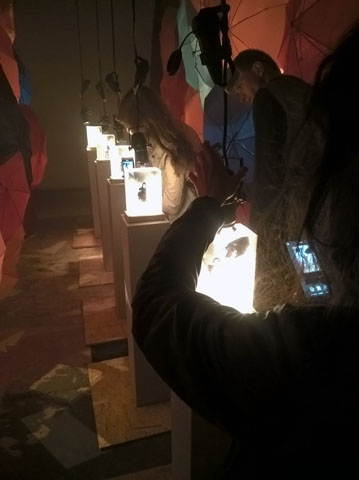

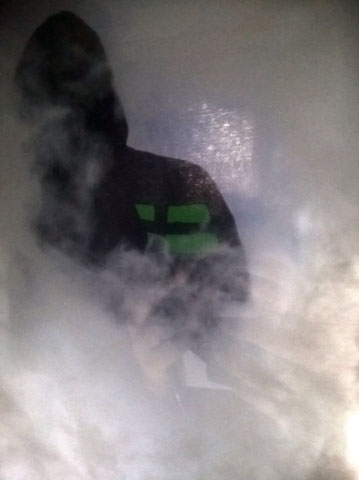

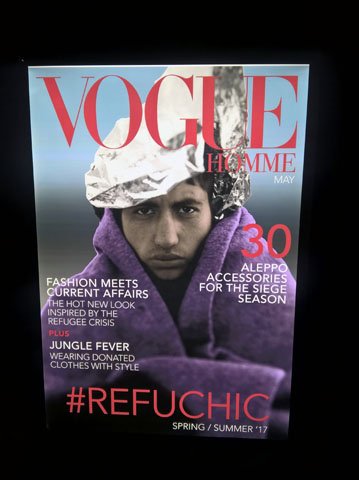

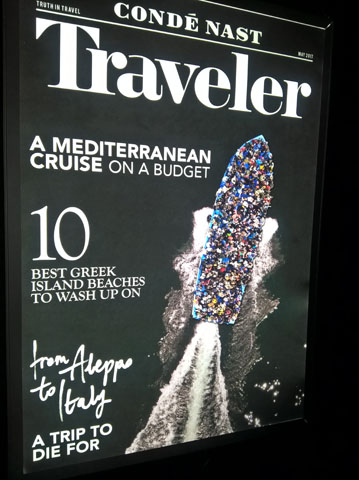

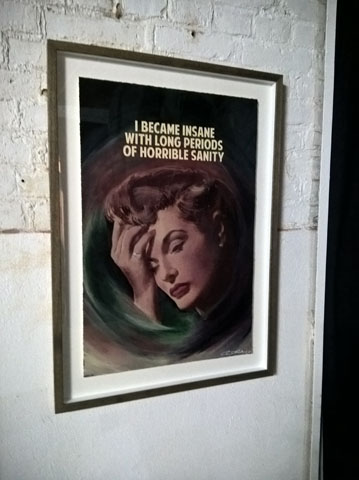

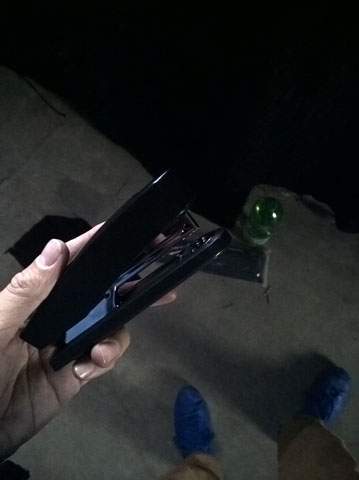

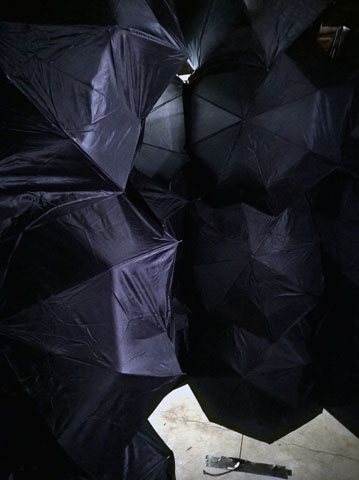
Comments